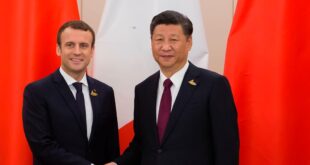 Muhamad Yehia.. Cairo
Muhamad Yehia.. Cairo
Once a proud guardian of Sudan’s ancient legacy, the National Museum in Khartoum now lies in ruins, a somber reflection of the country’s ongoing descent into chaos. After nearly two years of brutal conflict between the Sudanese army and the paramilitary Rapid Support Forces (RSF), the museum, a symbol of Sudanese identity and civilization, has been systematically looted and destroyed.
“This rebel militia (RSF) has destroyed everything, including all that concerns the Sudanese individual and the civilization of the Sudanese people,” lamented Gamal ElDeen Zain al-Abdeen, officer at Sudan’s National Corporation for Antiquities and Museums. “The most important artifacts that were stolen were in the strong room—items made of gold or gold-plated. It was stormed and looted just like the rest
The Sudan National Museum, situated along the Nile Avenue in central Khartoum, housed invaluable collections spanning millennia—from Paleolithic relics to artifacts of the Napatan, Meroitic, Christian, and Islamic periods. While the museum’s exterior still stands, its interior tells a devastating tale: shattered glass, broken mummy coffins, and display cases emptied of their treasures.
Local resident Sedeeq Mohamed Sedeeq spoke emotionally of the cultural loss. “You (RSF) are erasing the history of a country that is more than 7,000 years old. You are wiping the history of a nation while claiming to bring democracy. You looted the museum and destroyed what you couldn’t take.”
The destruction, however, was not confined to the National Museum. Other cultural institutions, such as the Ethnography Museum, also suffered. According to Zain al-Abdeen, “its walls were demolished and the exhibition halls and administrative offices were burned.”
The RSF reportedly occupied parts of the National Museum for two years, using it as a base while systematically looting its collections. Many of the stolen items—particularly gold artifacts—were housed in a secured chamber accessible only under strict supervision. While the extent of the theft is still being evaluated, authorities fear that the losses are substantial and irreplaceable.
UNESCO, which had been supporting restoration efforts since 2019, raised alarms last September about the looting and warned that the disappearance of these cultural items would not only erase a part of Sudan’s identity but also undermine any future national recovery.
Sudan’s conflict erupted in April 2023 when simmering tensions between the army and the RSF exploded into full-scale war. Since then, more than 20,000 people have died, over 14 million displaced, and much of the country, including the capital, has been reduced to rubble. The Sudanese military recently regained control of Khartoum, prompting assessments of cultural damage and beginning the arduous task of planning reconstruction.
“The war that took place in Sudan was a very bad one, and the destruction was systematic,” echoed resident al-Mohalelballah al-Nour. “It impacted everything—civilization, people, education, health, and even infrastructure, from the airport to bridges and people’s homes. In brief, it was a systematic destruction of the whole Sudan.”
Despite the devastation, there are glimmers of hope. Reconstruction plans for the museums are being drafted, beginning with assessments by expert committees. Their vision includes structural rehabilitation, artifact restoration, and improved security for Sudan’s cultural sites.
As efforts to recover begin, the words of Sedeeq serve as a stark reminder of what’s at stake: “You are erasing the oldest nation in history.” For Sudan, preserving what remains of its cultural soul may be as vital as any other act of rebuilding.
 موقع وجه أفريقيا موقع وجه أفريقيا هو موقع مهتم بمتابعة التطورات في القارة الأفريقية
موقع وجه أفريقيا موقع وجه أفريقيا هو موقع مهتم بمتابعة التطورات في القارة الأفريقية


